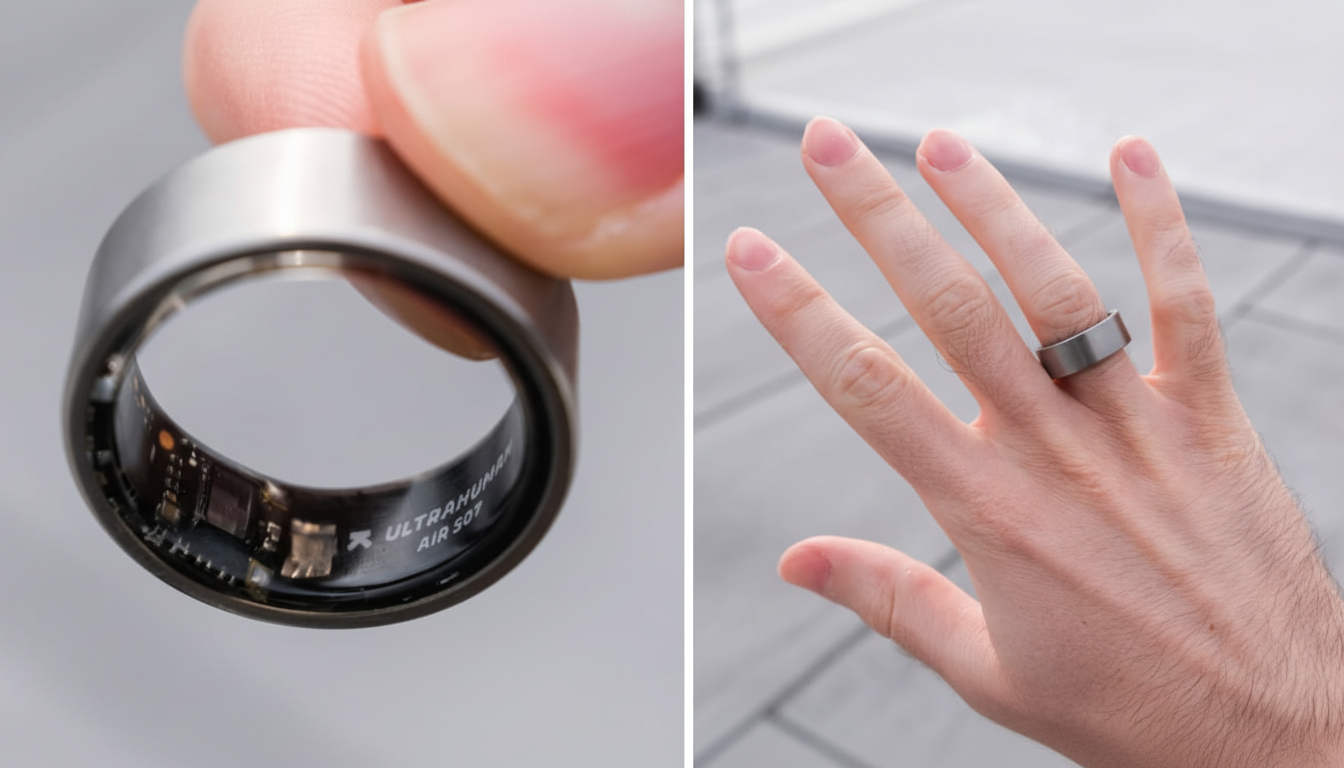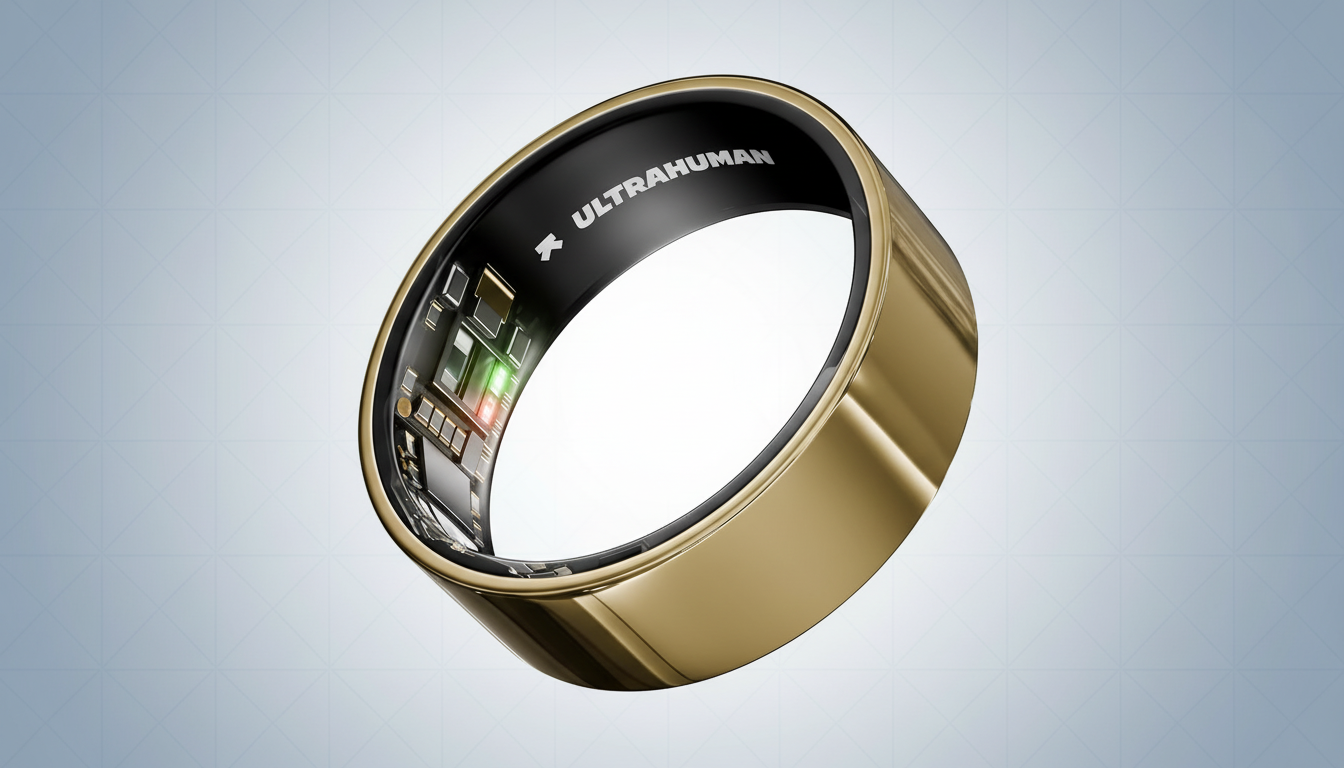Buying a smart ring in the US could soon get tougher. The US International Trade Commission has ruled in favor of Oura in a patent case against Ultrahuman, leading to a cease-and-desist order that bars Ultrahuman from importing additional Ring Air units into the country. For a category with only a handful of credible options, one of its standout newcomers now faces a supply squeeze.
Ultrahuman says retailers can continue selling through existing inventory and that current users will keep receiving firmware updates, app support, and warranty service. What’s unclear is how long those shelves will stay stocked—and whether a US-built version can arrive quickly enough to fill the gap.
- What the ITC ruling means for Ultrahuman Ring Air imports
- Ultrahuman’s Plan B: support users and build in the US
- Where this leaves competitors in the US smart ring market
- How availability could shift for Ultrahuman’s Ring Air buyers
- What buyers should watch as smart ring availability changes
- The bigger picture for smart rings amid escalating IP battles

What the ITC ruling means for Ultrahuman Ring Air imports
The ITC’s decision stems from a Section 337 investigation, a powerful trade mechanism often used in tech patent disputes. When the Commission finds infringement, it can issue exclusion orders that block infringing products at the border and impose cease-and-desist directives on US distributors. In practice, that means US Customs can stop new shipments of the Ring Air, even if they’re destined for third-party retailers.
Oura, which helped popularize smart rings, welcomed the ruling as validation of its intellectual property. The company has spent years building a patent portfolio around ring-based sensing and design, a strategy that increasingly shapes how rivals enter (or stay in) the US market.
Ultrahuman’s Plan B: support users and build in the US
Ultrahuman has signaled two parallel paths forward. First, it will support all existing Ring Air users without interruption, covering software updates and warranties—key reassurance for anyone already wearing the device. Second, the company aims to shift some production to a Texas facility and explore a “Made in USA” Ring Air variant. If that US-built model avoids the infringing elements identified by the ITC, it could resume domestic sales without relying on imports.
Ultrahuman also says it is developing a redesigned ring specifically intended for the US market. That approach mirrors a common outcome in ITC disputes: redesign around the asserted patents and seek clearance to continue selling.
Where this leaves competitors in the US smart ring market
The ruling also touched another Oura rival, RingConn, but that case ended differently. RingConn reached a licensing agreement with Oura, allowing it to continue offering its smart rings in the US while paying royalties. For shoppers, that means RingConn remains a readily available alternative, alongside Oura’s own lineup and newer entrants like Samsung’s Galaxy Ring.
RingConn’s latest model has drawn attention for value: a sub-$200 sticker and no ongoing subscription, paired with multi-day battery life and reliable sleep tracking. Oura counters with mature insights, a large research footprint, and continuous feature updates, though it requires a monthly membership for advanced metrics. Samsung’s entry raised mainstream awareness and ties ring data closely to its phone and watch ecosystem. The net effect until now has been healthy competition on features, price, and battery life—competition that could tighten if Ultrahuman’s US supply dries up.

How availability could shift for Ultrahuman’s Ring Air buyers
Short term, expect uneven availability for the Ultrahuman Ring Air as retailers sell through remaining stock. If you were considering the Ring Air, you may need to move quickly or be prepared to wait for a redesigned or US-made version. For everyone else, the ruling concentrates more share with players that have either settled licensing questions or built rings on their own IP foundations.
Prices could also firm up if supply tightens. Smart rings remain a niche within wearables, so even a single product missing from shelves can tilt what’s in stock during peak gifting seasons. Analysts have already flagged smart rings as a growth segment thanks to discreet form factors and strong sleep and recovery metrics; near-term legal outcomes will influence which brands capture that growth.
What buyers should watch as smart ring availability changes
If you’re ring shopping, prioritize the basics: comfortable sizing, 24/7 wearability, battery life that matches your routine, and the metrics you care about most (sleep staging, recovery scores, temperature trends, or heart-rate variability). Check whether advanced features sit behind a subscription, how long the brand typically supports hardware with updates, and what privacy controls exist for health data.
For current Ultrahuman users, the company’s commitment to ongoing software and warranty support is the key takeaway. For prospective buyers, monitor official statements from Ultrahuman and the ITC on any redesigned or “Made in USA” model—and compare that timing against alternatives that are currently available with clear licensing paths.
The bigger picture for smart rings amid escalating IP battles
Patent battles are becoming a defining feature of the smart ring category. Rings pack advanced sensors, batteries, and radios into a tiny form factor, making hardware and algorithmic innovations especially hard-won—and heavily patented. As leading brands defend their IP at the border, US availability can change quickly, turning legal decisions into practical buying constraints.
For now, the ITC’s ruling narrows the field, at least temporarily. Whether Ultrahuman can fast-track a compliant US model will determine if the Ring Air remains part of the conversation—or if competitors use this window to lock in mindshare among first-time ring buyers.

